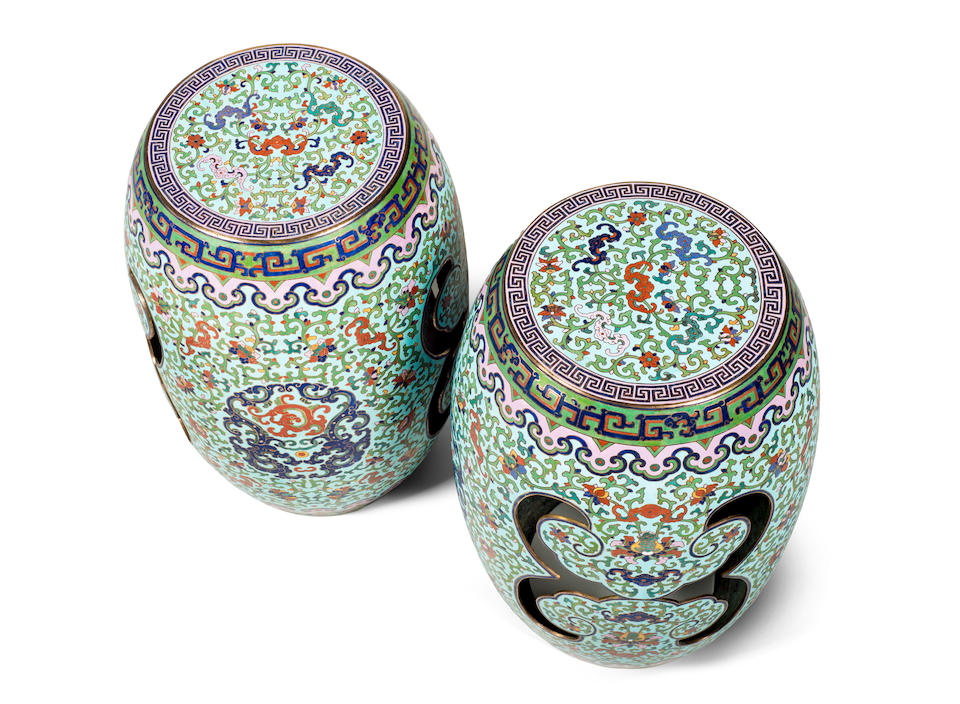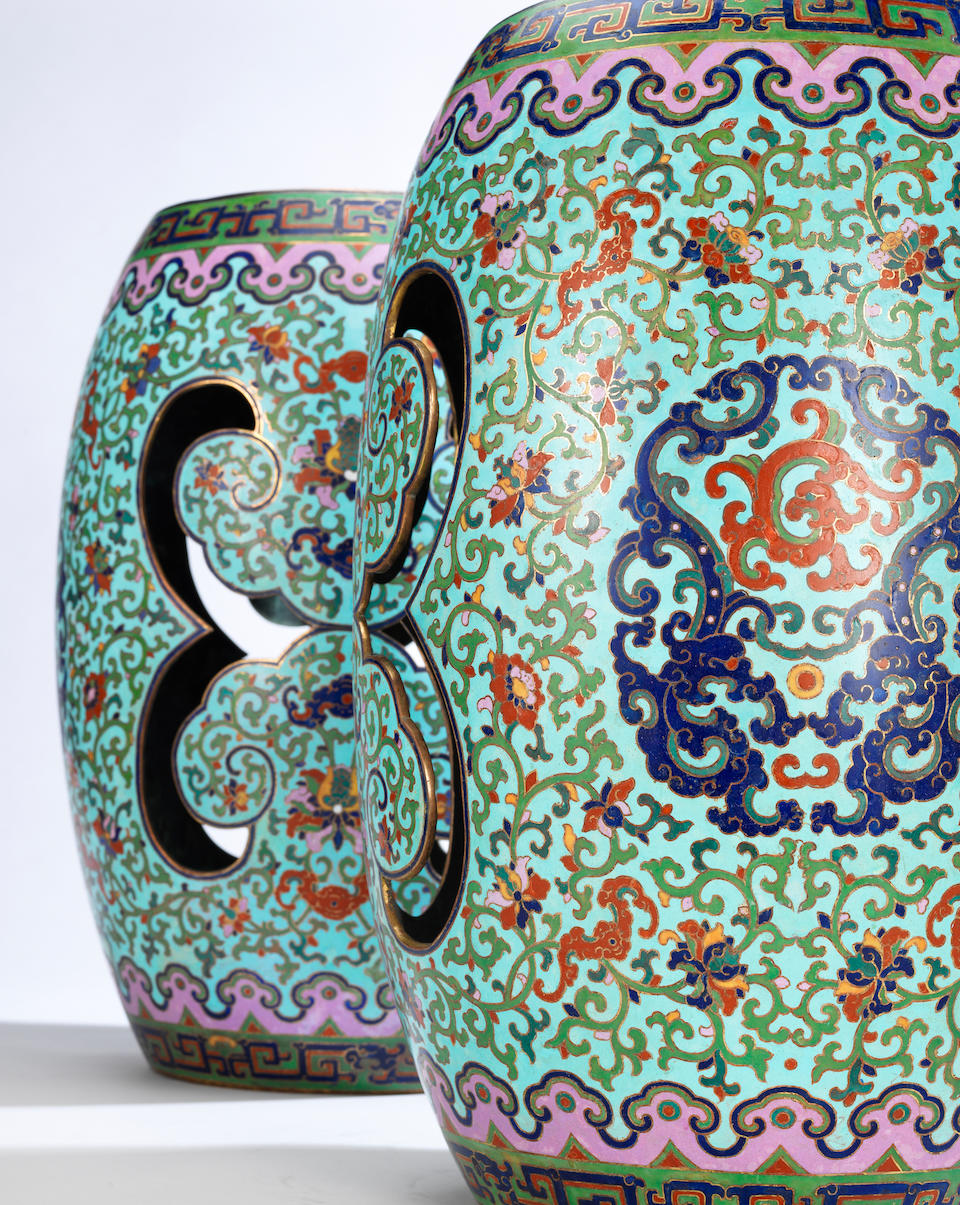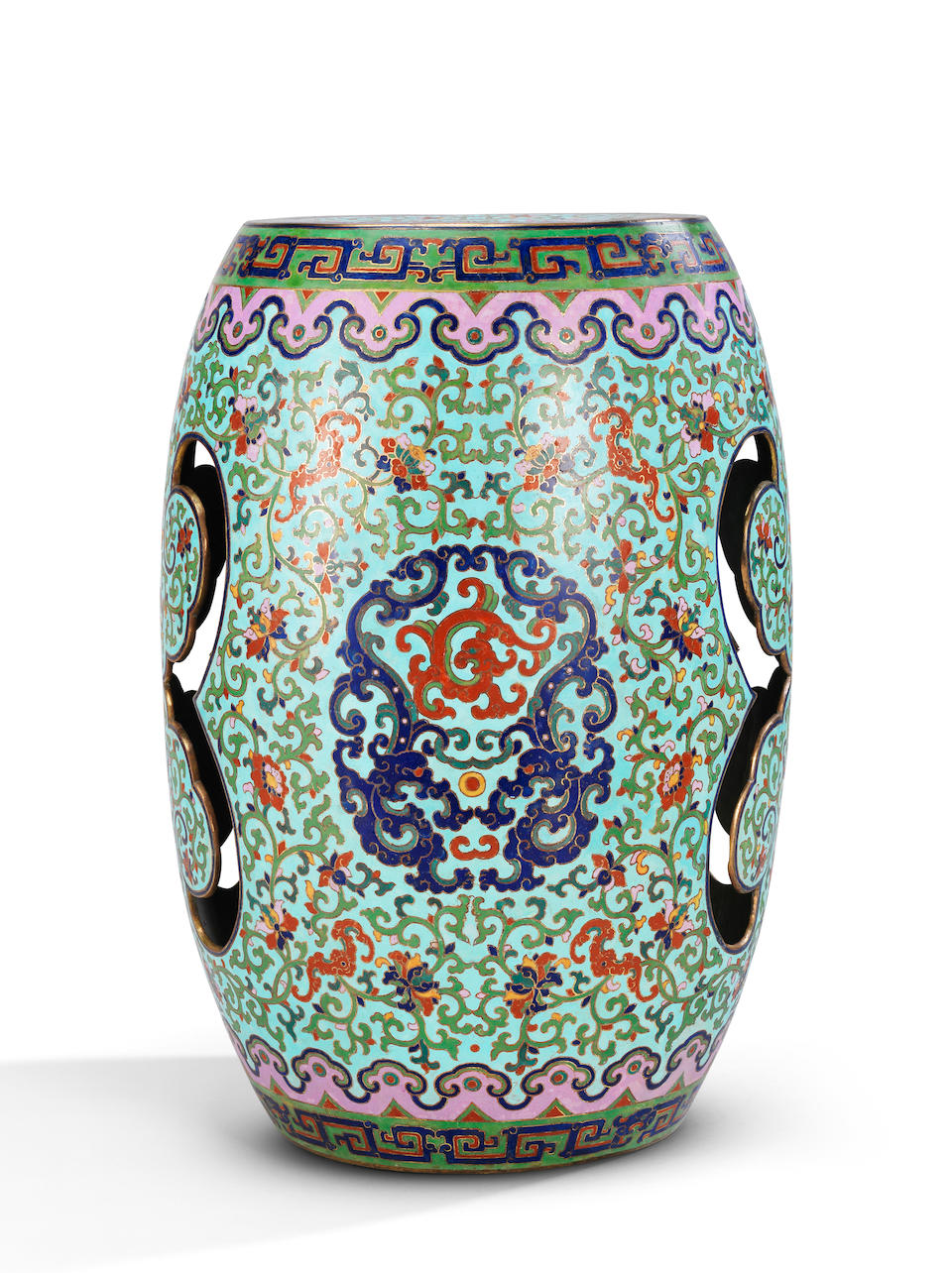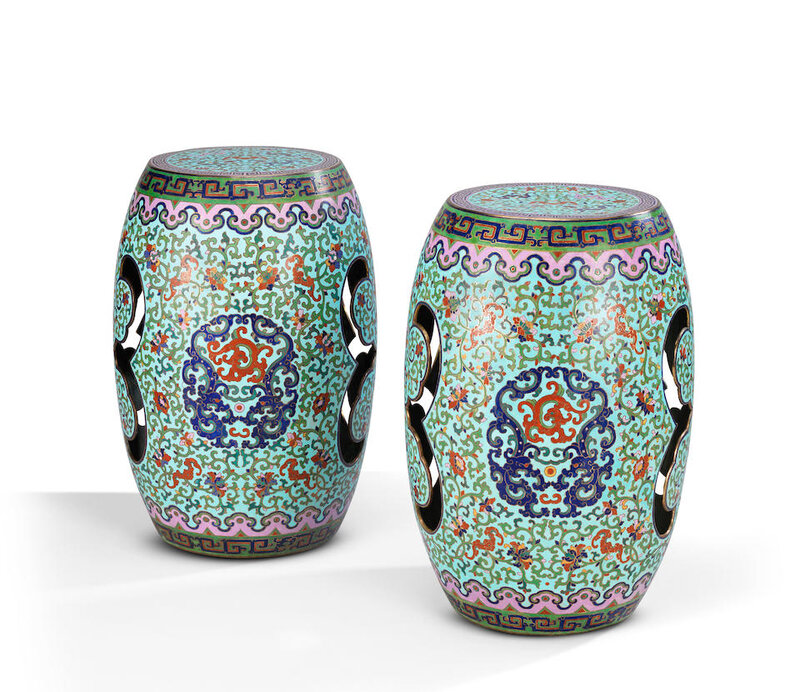A rare pair of imperial champlevé enamel openwork garden seats, Qianlong period (1736-1795)




Lot 61. A rare pair of imperial champlevé enamel openwork garden seats, Qianlong period (1736-1795). Each 53cm (20 7/8in) high. Estimate HK$1,600,000 - 2,000,000. Sold for HK$ 1,960,000 (€ 233,369). Photo: Bonhams.
Each stool modelled in the form of a barrel, the rounded sides with openwork areas in the form of large double ruyi-heads, interspersed with medallions formed by three archaistic chi dragons and between bands of large ruyi-heads, amidst an overall dense ground of lotus blooms and bats on leafy tendrils repeated on the top of the seat, all brilliantly enamelled in vibrant tones of red, blue, green, yellow, and pink on a pale turquoise ground.
Provenance: Marcel Proust (1871–1922), and thence by descent, by repute.
Note: Valentin Louis Georges Eugène Marcel Proust (1871-1922) was a renowned French novelist, author of the famous seven-volume novel À la recherche du temps perdu, written between 1913 and 1927, based on Proust's personal life told from a psychological and allegorical point of view. He is considered by many to be one of the greatest authors of all time. Proust's father, Adrien Achille Proust (1834-1903), was a prominent pathologist and epidemiologist, dedicated to the research and study of the cholera disease. It is known that Proust senior dedicated his life to this medical field and travelled extensively to Asia. For his services, and his exceptional contribution to the understanding of how to control cholera, he was conferred the distinction of Commandeur de la Légion d'honneur in 1892.
During the early to mid-Qing period, production of large sized and highly ornate enamel work reached unprecedented heights, reaching its zenith during the Qianlong period; champlevé enamel garden seats are exceptionally rare, but for cloisonné enamel examples, see Compendium of Collections in the Palace Museum: Enamels 2, Cloisonné in the Qing Dynasty (1644-1911), Beijing, 2011, pl.108; and another illustrated in ibid., vol.4, pl.130. Compare also the similar workmanship and colour-scheme on a champlevé enamel flowerpot, mid-Qing dynasty, illustrated ibid., vol.4, pl.22. A cloisonné enamel altar set with related bands of stylised kui dragons on the neck of the censer and mid-sections of the gu vases, mid-Qing dynasty, is illustrated in ibid., vol.4, pl.47.
Compare a near identical pair of champlevé enamel barrel-form garden seats, dated Qianlong, sold at Christie's Hong Kong, 28 May 2014, lot 3333. A cloisonné enamel pair of barrel-shaped seats with similar decoration from the Alfred Morrison collection, Fonthill heirlooms, was offered at Christie's London, 9 November 2004, lot 56.
Bonhams. Imperial Splendour, 3 Dec 2015, Hong Kong, Admiralty

/https%3A%2F%2Fprofilepics.canalblog.com%2Fprofilepics%2F1%2F0%2F100183.jpg)
/https%3A%2F%2Fstorage.canalblog.com%2F03%2F02%2F119589%2F96711876_o.jpg)
/https%3A%2F%2Fstorage.canalblog.com%2F11%2F31%2F119589%2F94773502_o.jpg)
/https%3A%2F%2Fstorage.canalblog.com%2F20%2F83%2F119589%2F94772815_o.jpg)
/https%3A%2F%2Fstorage.canalblog.com%2F26%2F72%2F119589%2F75604929_o.jpg)
/https%3A%2F%2Fstorage.canalblog.com%2F59%2F60%2F119589%2F26458628_o.jpg)



/http%3A%2F%2Fstorage.canalblog.com%2F40%2F03%2F119589%2F128033234_o.jpg)
/http%3A%2F%2Fstorage.canalblog.com%2F06%2F63%2F119589%2F127804034_o.jpg)
/http%3A%2F%2Fstorage.canalblog.com%2F66%2F42%2F577050%2F38151077_p.jpg)
/image%2F1371349%2F20240329%2Fob_17ee91_115-1.jpg)